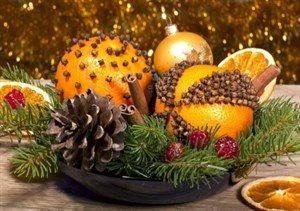It is said that it’s the most wonderful time of the year-but, it can also be the most wasteful. Perhaps because it’s the most hectic, we can sometimes choose shortcuts that are not so eco-friendly.
While some people are earth-aware and have changed their life styles accordingly, everyone can make a difference with a few minor changes in their holiday preparation plans.
Here are a few ideas to consider:
Gift Wrapping
Is there anyone who hasn’t wrapped a gift in brightly colored, metallic wrapping paper only hours (minutes?) before the recipient received it? Then, minutes later watched it as torn apart, crumpled up and tossed away? Because of the metal used in making these, metallic paper can last years in a landfill.
Why not wrap gifts in brown craft paper this year? This versatile, all occasion paper is great for creating elegant, nature inspired presentations. Do you have young children? Let them color holiday pictures on the gifts to “help” with the wrapping.
A 1000 foot roll of this all occasion paper costs about $60 and will last for years to come. By using a jute ribbon, you don’t have to use tape. You can also forgo the gift tag by writing the name directly onto the paper. Make sure to save this year’s received Christmas cards. They can be easily converted into gift tags for next year simply by cutting the second panel off.
Bonus: The jute, paper and pine cone can be used as a fireplace starter.
If you are the recipient of a large commercially wrapped gift, you can save the paper to use for smaller gifts next season. Of course, ribbons and bows are easy to save and reuse. While opening gifts, set up a recycling box in place of plastic trash bags.
The Re-Gift Exchange

Some families have adopted a re-gift Pollyanna party. In this “One Man’s Trash” game, guests can bring Christmas gifts that they can’t really use; or they dig items out from the attic that just need a new home. Either way, everyone brings a wrapped gift along to the party. All gifts are placed in a pile on the table or on the floor. Numbers (one for each guest) are written on small pieces of folded paper and put into a box or bag. Guests take turns pulling numbers. The guest who drew number “1 ” on the paper selects a gift, opens the gift for everyone to see, and places the item in front of them. The next person who has number “2” may take a gift from the pile,ortake the gift from number “1”. Each person will follow through in numerical order allowing higher numbers the advantage of stealing. When a person has their gift “stolen” they then draw a new gift from the pile.
Real Tree vs. Artificial
At first glance, it may appear that an artificial Christmas tree would be the more eco-friendly option, as they can be used year after year. However, these plastic trees are made of petroleum products (PVC), and use up resources in both the manufacturing and shipping; sometimes all the way from China.
While they theoretically last forever, research shows that they are commonly thrown out and replaced because repeated use makes them less attractive. They are then sent to landfills where their plastic content makes them last forever.
On the other hand, look for tree farms that have live trees and stewardship programs in place. This means that the harvesting is controlled and the trees are replanted regularly. Additionally, growing trees contribute to air quality and almost ninety percent of Christmas trees are recycled into mulch.
Eco-Friendly Decoration
Get the family together to make pomander ball decorations. These eco-friendly decorations look and smell wonderful on any table-scape.

Here’s what you will need:
- Firm oranges or other citrus fruit
- Cloves (buy in bulk at a health food store)
- ¼ cup Orris root powder (as a preservative)
- 1 teaspoon each of – cinnamon, cloves, ginger, nutmeg, allspice or (or 5 teaspoons of Chinese 5 Spice powder)
- Straight pins and a ribbon if you’d like to hang it
Start by poking holes in your fruit in a decorative pattern. A skewer or chopstick works really well for this. This gets a little messy, so be sure to have a towel beneath your project . Once you are done making your holes, dry your fruit off and put a whole clove into each hole. Then, roll the clove studded fruit in the spice mixture, covering it completely. Place it in a brown paper bag and let it rest (dry out) for a couple of weeks. Depending on the humidity level, it could take anywhere from 2 – 6 weeks. The
process can be sped up by placing the fruit in an unlit (pilot light only) oven for a few hours. Be sure to check it periodically for signs of mold (if found, discard) and to roll it through the spices.
Once your pomander is dried out you can add ribbons for hanging. If kept in the right conditions, these can last for years. If not, it can go into the compost bin.
Even if you adopt just one eco-friendly Christmas idea you can help cut back on the holiday’s heavy footprint. What ideas do have to make the holiday more eco-friendly?